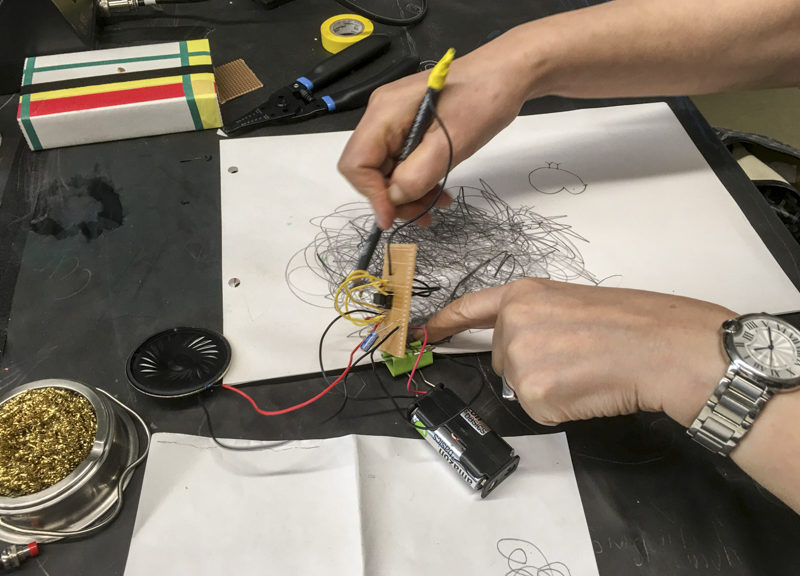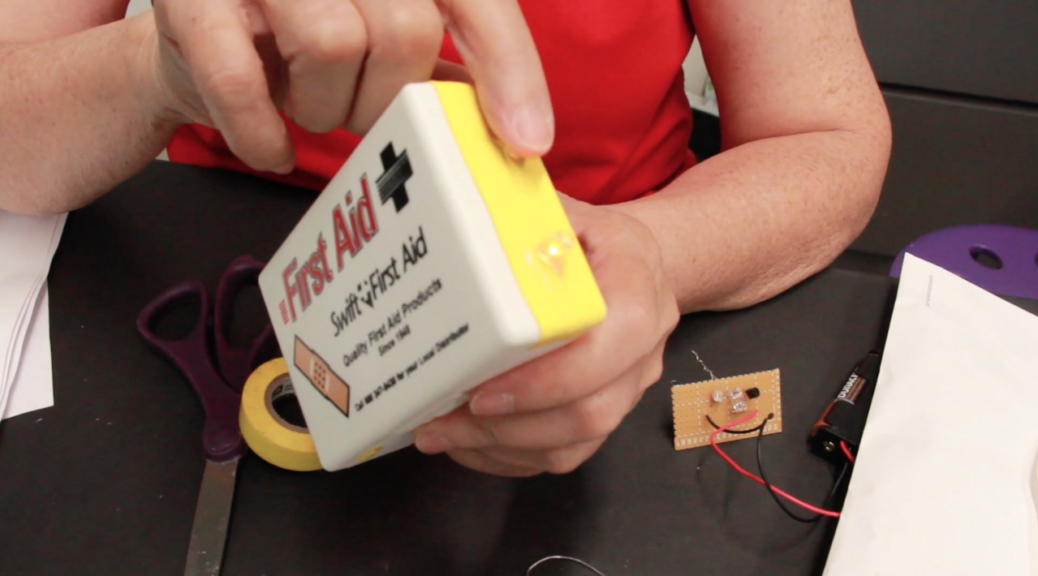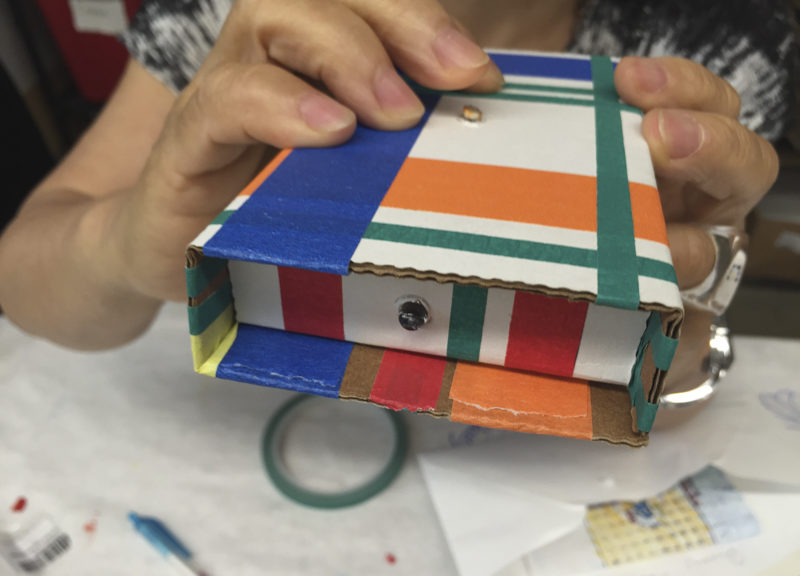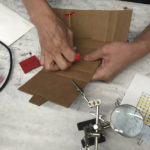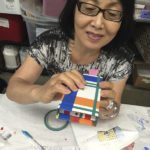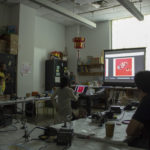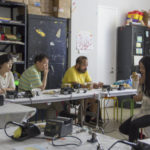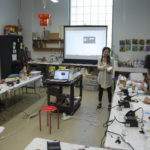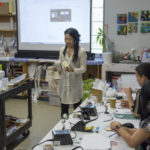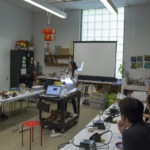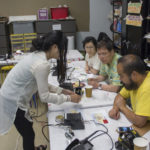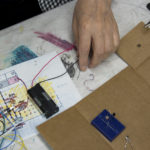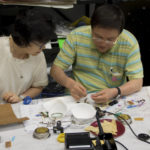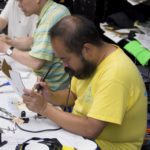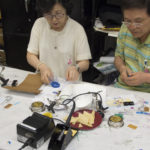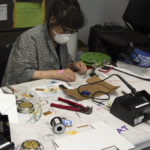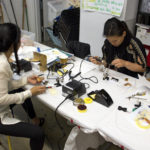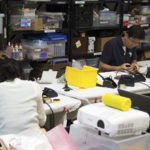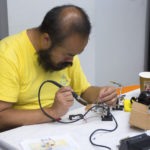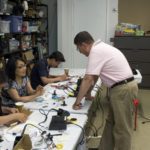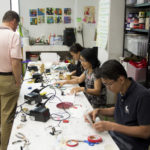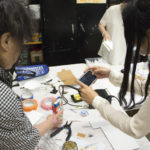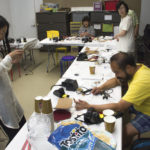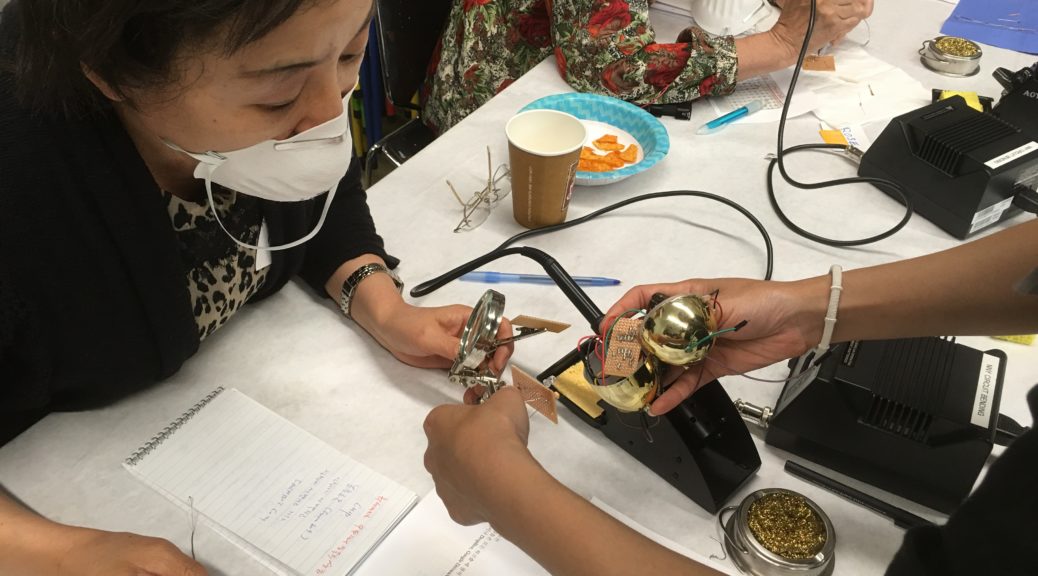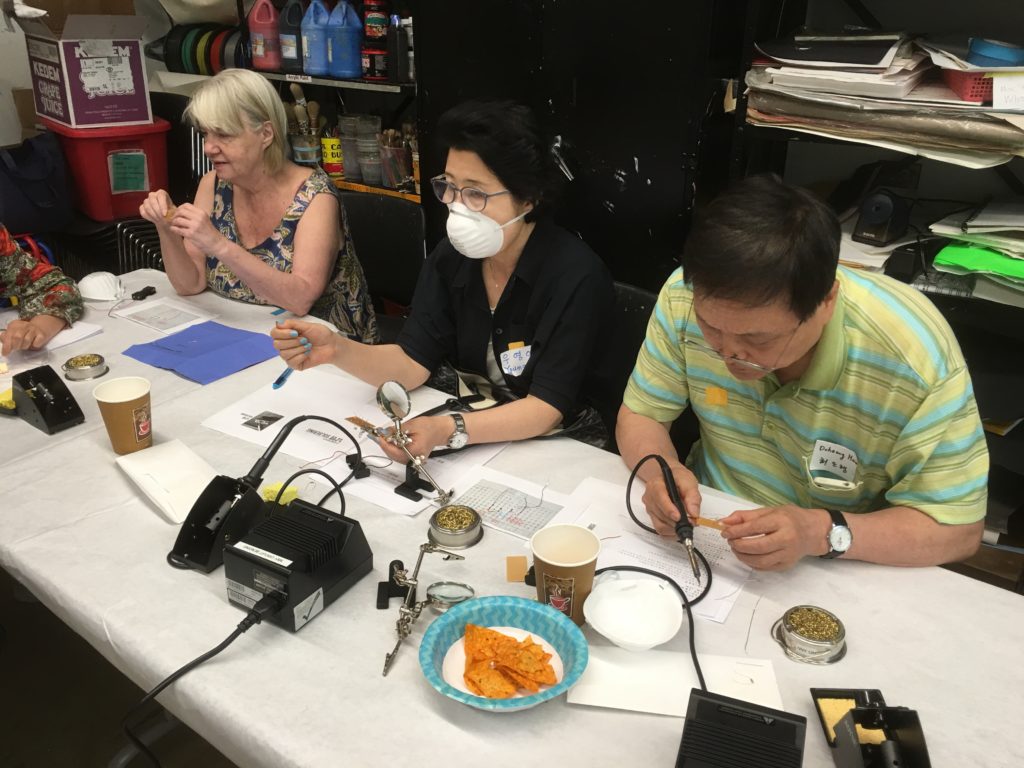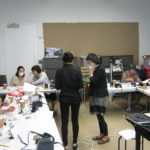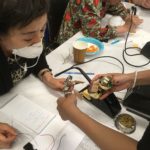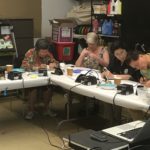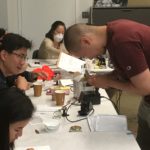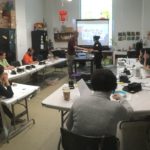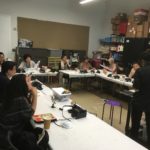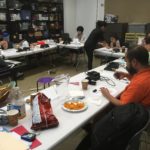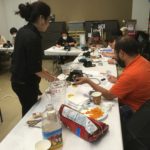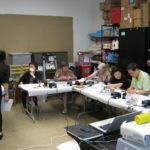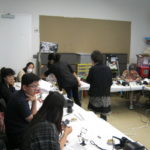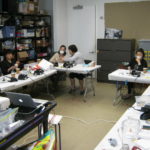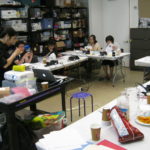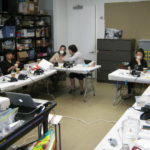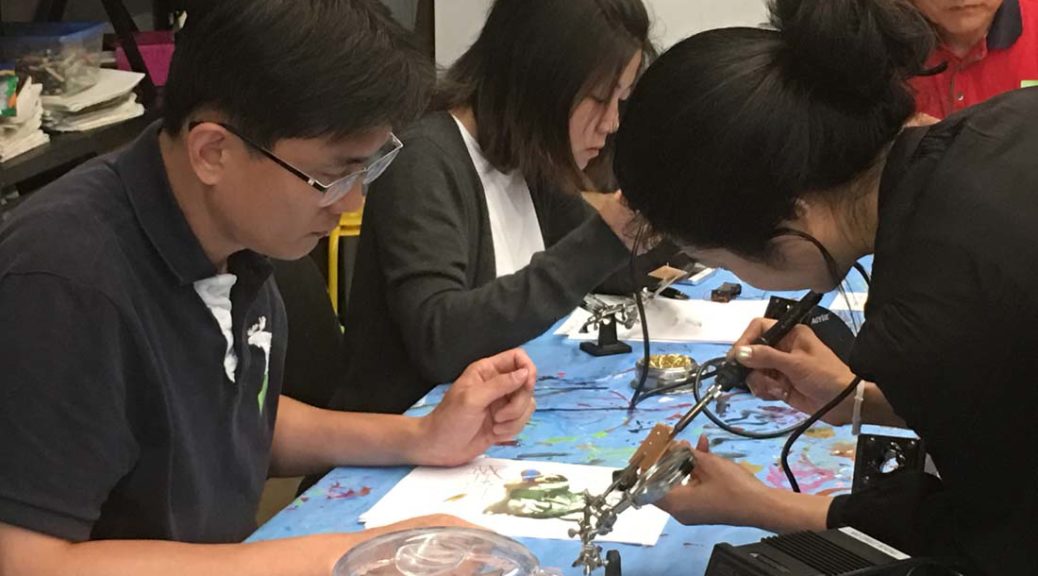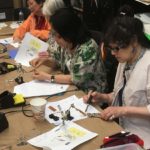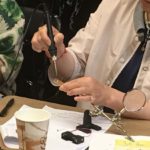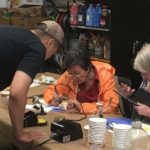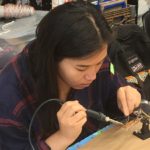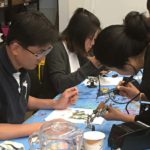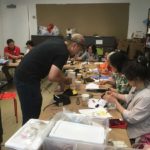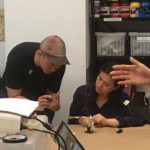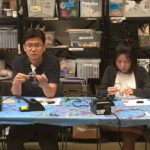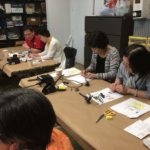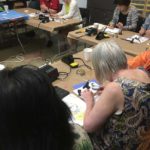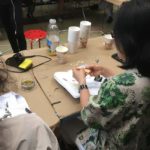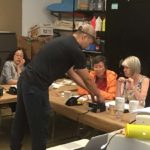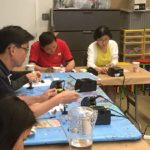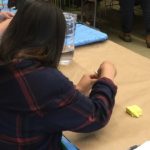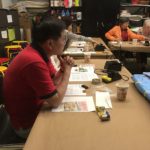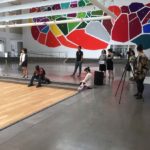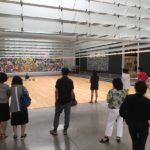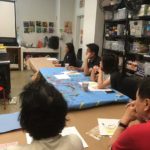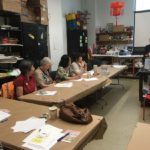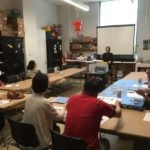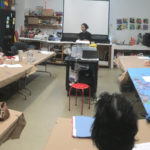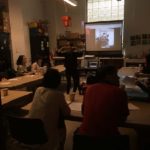
Ebb and Flow: Drawing Sound workshop had its grand third week. Three hours of lab time went by quickly as participants encountering new skills. Dark detecting LED circuit using a photocell resistor was a warm-up project. The circuit required only four main components – 2.2K Ωhm resistor, photocell, LED and NPN 2N 3904. A photocell is a light-dependent resistor that its resistance varied by the amount of light it is exposed to. If the amount of light increases, free electrons conduct electricity lowering resistance. But without NPN transistor, the LED in the circuit will get brighter with more light in an environment. 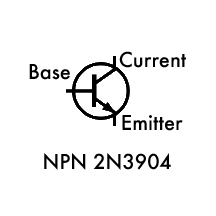 NPN 2N 3904 is a type of bipolar transistor that amplifies or switches electronic signals and power. For the circuit for our project, NPN will turn on the LED in the dark when photocell’s resistance is up in increments opening up electric flow from the current to the emitter. Emergency lights and streetlights are good examples from our surrounding. Some artists generate interactive elements using various resistance values from a photocell. This set of data (inputs) could manipulate audios, images, or videos (outputs) processed by a software interface designed by an artist(s).
NPN 2N 3904 is a type of bipolar transistor that amplifies or switches electronic signals and power. For the circuit for our project, NPN will turn on the LED in the dark when photocell’s resistance is up in increments opening up electric flow from the current to the emitter. Emergency lights and streetlights are good examples from our surrounding. Some artists generate interactive elements using various resistance values from a photocell. This set of data (inputs) could manipulate audios, images, or videos (outputs) processed by a software interface designed by an artist(s).

This week was the most challenging of all. The participants had to familiarize with reading schematic, direction of electric current, Ωhm values of resistors, the polarity of each part and more. We tested the circuit on a mini breadboard before soldering into a piece. If the LED did not turn on while photocell is in the dark, we needed to troubleshoot instances of errors. It could be malfunctioning parts, drained batteries, or wrong connections. One participant actually burnt LED light due to a strong current went straight to the LED before passing through the resistor. “Hello World” the right of passage was performed. You cannot learn a thing without breaking and banging. Persistent souls successfully soldered up the parts and jumped onto a case design. They proudly interacted with darkness sensing LED, their first interactive DIY electronic piece, taking selfies and recording videos.
*Our last class was mentioned in the Korea Times – USA.
낙조와 흐름 워크샵이 제 삼주제 접어들었다. 장 3 시간 실습 시간은 새로운 기술을 읽히는 참가자들에게는 전혀긴시간이 아니었다. 어둠을 검출하는 LED는 간단한 워밍업 프로젝트다. 이 회로는 네 개의 주요 구성 요소로 되어있다 – 2.2K Ωhm 저항기, 포토셀, LED, 및 NPN 2N 3904 트랜지스터. 포토셀은 저항의 크기가 노출되는 빛의 양에따라 변화하는 광 가변 저항기이다. 빛의 양이 증가하면, 자유 전자는 빠르게 움직이고 저항의 크기는 떨어진다. NPN 트랜지스터가 없었으면 LED는 밝은환경에서 더 밝게 빛을 내었을 것이다. NPN 2N 3904는 전원을 증폭 또는 전자 신호를 전환하는 데 사용되는 바이폴라 트랜지스터의 유형이다. 우리의 프로젝트에 사용된 회로의 경우, NPN가 포토셀의 저항의 크기가 커질수록 전류의 전기의 흐름을 개방 하여 LED를 빛나게 한다. 비상 조명 및 가로등은 우리 주변에서 좋은 예이다. 일부 작가는 포토셀의 다양한 저항 값을 인터렉티브 요소로 이용한다. 이 데이터는 아티스트가 의도하는 인터페이스에 따라 오디오 사운드, 이미지 또는 동영상을 조작 할 수있다.
이번 주는 모두에기 가장극한 도전의 연속이였다. 참가자들은 회로읽는 법, 전류의 방향 , 저항 Ωhm 값 , 각 부분의 양극성등을 읽혀야했다. 우리는 납땜 하기 전에 미니 브레드 보드 에 회로를 테스트했다. 포토셀이 어둠 에있을떄 LED 가 켜지지 않은 경우 , 우리는 오류임을 확인하고 원인을 찾아야 했다. 이때 고장난 부품 ,다 나간 배터리, 또는 잘못된 연결이 원인 될 수 있습니다. 실제로 한 참가자는 저항기를 통과 하기 전에 LED 를 연결헤 LED가 강한 전류에 녹기도 했다. ” 헬로 월드!” 전자회로를 배우는 가장 중요한 예를 치루셨습니다. 망가트려보고 부수지 않으면 진정한 배움의 단계가 아니지요. 모두가 성공적으로 부품을 납땜하였고 케이스 디자인을 진행하였다. 그들은 자랑스럽게 어둠을 감지하는 LED – DIY 전자 조각과 인터렉티브하면서 셀카 촬영과 비디오를 녹화했다.



